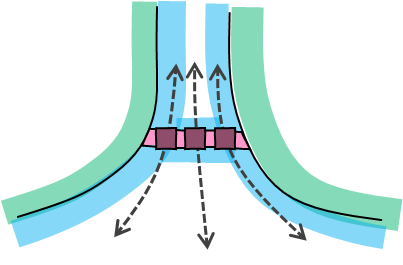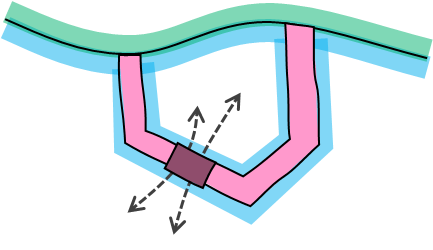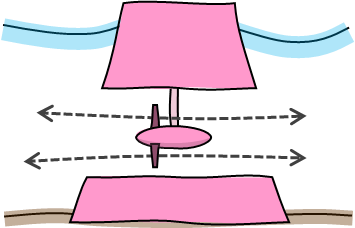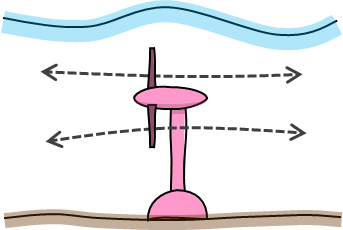Most people are aware that the moon (and to a lesser extent the sun), exert a gravitational pull on the earth resulting in tides that manifest as a rise and fall in the water at the coastline. In fact, the moon creates a bulge on two sides of the earth, the closest side because it pulls the water toward itself, and the opposite side because of inertia. As the earth rotates, the bulges move across the earth which provides the tides.
This process is very predictable – in fact, the very first tide prediction machine was designed about 150 years ago. Predictability is important in power generation to efficiently manage power supply and demand. Lack of predictability is often cited as a significant disadvantage of renewable energy sources. With fossil fuels, there is a constant supply of fuel and you know exactly how much energy you will get out of that fuel. That is not the case with most renewable energy sources, which are typically dependent on complex factors that are difficult to predict (such as weather patterns).
This makes the (very predictable) tides a particularly attractive source of renewable energy.
How is energy captured from the tides?
Below we discuss the two main categories of tidal energy converters which capture energy from the tides in slightly different ways.
Tidal barrages and lagoons
Some of the earliest examples of using the tide as a source of power are, remarkably, from the 7th century. These were in the form of “tide mills”, which used the tides to grind grain. They worked by capturing seawater in a reservoir at high tide, and then releasing the water down a chute at low tide to rotate a water wheel.
This is almost exactly the same operating concept as modern-day tidal barrages and lagoons. These involve building a dam-like structure to partition or enclose a body of water. In the case of a barrage, the structure extends across a bay or an estuary as shown in the diagram below. An example is the Rance Tidal Power Station – the world’s first tidal power station (it opened in 1966) – which extends across the estuary of the Rance River in France.

With proposed tidal lagoon plants (no such plant actually exists yet), on the other hand, the structure encloses a coastal area of the sea forming an artificial lagoon. One benefit of this is that the plant is less limited in terms of location because it doesn’t have to be placed at a river mouth, which can mean choosing an area where there may be less impact on sea life. A major issue with tidal barrages (and, to an extent, lagoons) is that the turbines can injure sea life and restrict migration, and the silt generated by such systems can suffocate local aquatic plants.

Both types of plant operate according to the same principle. Gates are provided in the dam-like structure, which can be opened and closed to control the flow of water into and out of the lagoon/river. As the water level rises due to the tide, the gates are closed so that the sea level rises higher than the level of the water along the river or in the lagoon. Once an optimal difference in water height is achieved, the gates are opened so that sea water flows through the gates. Turbines are provided in the structure, which are turned by the flowing water to generate electricity.

Once the water height within the lagoon or river equalises with the external sea level, the gates can be closed again to, once again, form a water level difference. Once the tide has receded, the gates are opened to release water back into the sea. This process is repeated to provide a reliable source of renewable energy.
Tidal streams
We mentioned above that tidal barrages and lagoons can negatively impact the local environment. Such plants are also expensive, because they require the construction of very large structures in a sea-based environment. Tidal stream plants provide an alternative that does not suffer (or at least suffers to a lesser extent) from these two issues.
Tidal stream generators are somewhat similar to wind turbines, except that they are underwater and make use of the kinetic energy of the tides rather than the wind. As the tides ebb and flow, the movement of the water turns the turbine which generates electricity. In other words, unlike tidal barrages and lagoons, tidal stream generators make direct use of the movement of water created by the tides. To capture this energy, the turbines can either be fixed to the seabed (as per our diagram below), or can be suspended from a floating platform, such as a barge.

Tidal stream generators are not all wind turbine look-alikes though. One of the more extreme examples is Minesto’s patented system, which is referred to as a kite but looks more like a spaceship. The “kite”, which is tethered to the seabed, is driven by tidal water so as to “fly” through the water along a continuous figure of eight path. This causes a turbine mounted to the kite to rotate and generate electricity.
Where does tidal energy stand now, and where what about the future?
Tidal energy has yet to take off, at least in the UK. The shear cost of installing and maintaining such systems presents a significant barrier to commercial success. Many entities have shown initial success in testing, only to struggle with the full-scale commercial project. Progress is therefore slow. It’s telling, for example, that the Rance Tidal Power Station was only overtaken as the largest tidal power station in the world in 2011, 45 years after it was first installed.
Fortunately, the many failures have not completely dissuaded others from seeking success. Minesto (which we mentioned above), for example, seems to be progressing its technology with installations in the Faroe Islands. Closer to home, the Blue Eden tidal lagoon project in Swansea appears to now be fully funded, which may allow it to replace the previous unsuccessful Swansea Bay Tidal Lagoon proposed in the same area. At the other end of the UK, Orbital Marine recently announced a new tidal energy project in the Orkney Islands.
So, there is certainly no shortage of effort in making tidal power success – most likely because, at least in theory, it offers such significant advantages. Only time will tell, however, whether one (or hopefully) more of these projects turns into a commercial reality.
To learn more about marine and ocean engineering or talk to one of our specialists, visit our Spotlight Page.
Ben is a Partner and Patent Attorney at Mewburn Ellis. Ben is experienced in patent drafting, prosecution and Freedom to Operate within the mechanical engineering, medical device and consumer products sectors. He also deals with filing and infringement issues relating to registered and unregistered designs.
Email: ben.boyd@mewburn.com
/BEN%20BOYD-author.png?width=100&height=100&name=BEN%20BOYD-author.png)

